<< Previous | Displaying results 1501-1550 of 6769 for "" | Next >>
The Germans established the Drancy camp in France in August 1941. Drancy later became the major transit camp for the deportations of Jews from France. Fewer than 2,000 of the almost 65,000 Jews deported from the Dranc...
Westerbork was located in the Netherlands, which Germany had invaded in 1940. From 1942 to 1944, it served as a transit camp for Jews before they were deported to killing centers. During those two years, the Germans deported 97,776 Jews from Weste...
From 1942 to 1944, Westerbork served as a transit camp for Jews before they were deported to the killing centers.
Westerbork was located in the Netherlands, which Germany had invaded in 1940. From 1942 to 1944, it served as a transit camp for Jews before they were deported to killing centers.Learn about Holocaust survivors' experiences in Westerbork.&n...
The Germans established Jewish Councils (Judenraete) in the ghettos during World War II. Jewish Councils were required to implement Nazi policies in the ghettos. This role meant impossible moral dilemmas. Council members had to decide whe...
Janowska was a forced labor camp for Jews in German-occupied Poland. It also served as a transit camp during the mass deportations of Polish Jews to the killing centers in 1942. Jews underwent a selection process in Janowska similar to that used a...
Almost 22,000 prisoners—more than 18,000 of them Jewish—passed through the Gurs camp in France. Living conditions in Gurs were overcrowded. Prisoners faced a constant shortage of water, food, and clothing. Many of the camp's Jewish prisoners were...
Almost 22,000 prisoners—more than 18,000 of them Jewish—passed through the Gurs camp in France. Living conditions in Gurs were overcrowded. Prisoners faced a constant shortage of water, food, and clothing. Many of the camp's Jewish prisoners were...
The Płaszów camp was established in 1942 under the authority of the SS and police leaders in Krakow (Cracow). Płaszów was initially a forced-labor camp for Jews, but became a concentration camp in 1944. The largest...
The Płaszów camp was established in 1942 under the authority of the SS and police leaders in Krakow (Cracow). Płaszów was initially a forced-labor camp for Jews, but became a concentration camp in 1944. The largest number of people confined there...
Located in eastern France, the Natzweiler-Struthof concentration camp was one of the smaller camps built by the Germans. From May 1941 to March 1945, between 19,000 and 20,000 people were murdered in the Natzweiler-Struthof camp system.
Before World War II, Salonika had the largest Jewish community in Greece. In April 1941, Germany occupied parts of Greece, including Salonika. Between 1941 and 1943, Salonika's Jewish community was destroyed. More t...
Breendonk was an internment camp in German-occupied Belgium. The site had originally been built in the early twentieth century to serve as a Belgian fortress. After Germany conquered Belgium in May 1940, the Germans turned Breendonk into an internme...
In the summer of 1942, the Germans made preparations to deport the Jews of Belgium. They converted military barracks in the city of Mechelen into a transit camp. Between August 4, 1942, and July 31, 1944, a total of 28 trains carrying 25,257 Jews left Mechelen for German-occupied Poland; most of them went to Auschwitz-Birkenau. This figure represented more than half of the Belgian Jews murdered during the Holocaust.
Between 1943 and 1945, a group of Jewish men and women from Palestine parachuted into German-occupied Europe. The 32 parachutists had volunteered with the British army and were sent on rescue and resistance missions. The Germans captured 12 of the...
Gross-Rosen became an independent concentration camp in 1941. The camp eventually expanded to become the center of an industrial complex and to include a vast network of at least 97 subcamps.
It is estimated that of the 120,000 prisoners who passed through the Gross-Rosen camp system, at least 40,000 died either in the camp or during its evacuation. These ID cards and testimonies describe the experiences of individuals who were imprisoned in Gross-Rosen.
Germany occupied the Polish city of Tarnow in 1939. Deportations from Tarnow began in June 1942, first to the Belzec killing center. Following the June deportations, the Germans forced the surviving Jews in Tarnow, as well as Jews from nearby town...
In July 1938, delegates from 32 countries met in Evian, France for a conference on the refugee crisis. The delegates expressed sympathy for the Jews who were seeking to flee Nazi persecution. Most countries, however, refused to admit more refugees.
The SS first established Neuengamme in December 1938 as a subcamp of Sachsenhausen. Later, in June 1940, the SS decided to establish an independent concentration camp at Neuengamme. Prisoners of the camp were subjected to horrific living condition...
The SS first established Neuengamme in December 1938 as a subcamp of Sachsenhausen. Later, in June 1940, the SS decided to establish an independent concentration camp at Neuengamme. Prisoners of the camp were subjected to horrific living condition...
The German-American Bund was an antisemitic, pro-Nazi group for Americans of German descent.
The United Nations Relief and Rehabilitation Administration (UNRRA) was created at a 44-nation conference in 1943. Its mission was to provide economic assistance to European nations after World War II and to repatriate and assist refugees.
Emanuel and his family lived in the small town of Miechow, north of Krakow. After Germany invaded Poland in September 1939, persecution of Jews increased. The Germans established a ghetto in Miechow. Emanuel was forced to live in the ghetto. Emanuel, his mother, and his sister escaped from the ghetto before it was destroyed in 1942. He stayed in a monastery, under an assumed identity, along with members of the Polish underground. Emanuel left the monastery after about a year when a teacher began to suspect…
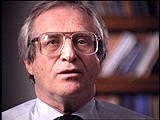
Leah grew up in Praga, a suburb of Warsaw, Poland. She was active in the Ha-Shomer ha-Tsa'ir Zionist youth movement. Germany invaded Poland in September 1939. Jews were forced to live in the Warsaw ghetto, which the Germans sealed off in November 1940. In the ghetto, Leah lived with a group of Ha-Shomer ha-Tsa'ir members. In September 1941, she and other members of the youth group escaped from the ghetto to a Ha-Shomer ha-Tsa'ir farm in Zarki, near Czestochowa, Poland. In May 1942, Leah became a courier…
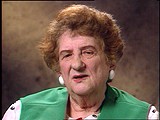
Blanka was an only child in a close-knit family in Lodz, Poland. Her father died in 1937. After the German invasion of Poland, Blanka and her mother remained in Lodz with Blanka's grandmother, who was unable to travel. Along with other relatives, they were forced into the Lodz ghetto in 1940. There, Blanka worked in a bakery. She and her mother later worked in a hospital in the Lodz ghetto, where they remained until late 1944 when they were deported to the Ravensbrueck camp in Germany. From Ravensbrueck,…
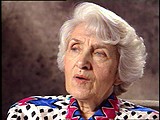
Both of Charlene's parents were local Jewish community leaders, and the family was active in community life. Charlene's father was a professor of philosophy at the State University of Lvov. World War II began with the German invasion of Poland on September 1, 1939. Charlene's town was in the part of eastern Poland occupied by the Soviet Union under the German-Soviet Pact of August 1939. Under the Soviet occupation, the family remained in its home and Charlene's father continued to teach. The Germans…
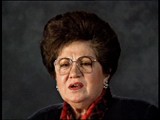
Both of Charlene's parents were local Jewish community leaders, and the family was active in community life. Charlene's father was a professor of philosophy at the State University of Lvov. World War II began with the German invasion of Poland on September 1, 1939. Charlene's town was in the part of eastern Poland occupied by the Soviet Union under the German-Soviet Pact of August 1939. Under the Soviet occupation, the family remained in its home and Charlene's father continued to teach. The Germans…
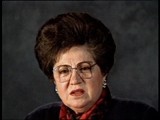
The Germans invaded Poland in September 1939. When Makow was occupied, Sam fled to Soviet territory. He returned to Makow for provisions, but was forced to remain in the ghetto. In 1942, he was deported to Auschwitz. As the Soviet army advanced in 1944, Sam and other prisoners were sent to camps in Germany. The inmates were put on a death march early in 1945. American forces liberated Sam after he escaped during a bombing raid.
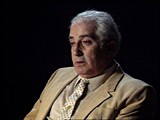
Cecilie was the youngest of six children born to a religious, middle-class Jewish family. In 1939, Hungary occupied Cecilie's area of Czechoslovakia. Members of her family were imprisoned. The Germans occupied Hungary in 1944. Cecilie and her family had to move into a ghetto in Huszt and were later deported to Auschwitz. Cecilie and her sister were chosen for forced labor; the rest of her family was gassed upon arrival. Cecilie was transferred to several other camps, where she labored in factories. Allied…
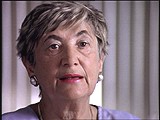
Blanka was an only child in a close-knit family in Lodz, Poland. Her father died in 1937. After the German invasion of Poland, Blanka and her mother remained in Lodz with Blanka's grandmother, who was unable to travel. Along with other relatives, they were forced into the Lodz ghetto in 1940. There, Blanka worked in a bakery. She and her mother later worked in a hospital in the Lodz ghetto, where they remained until late 1944 when they were deported to the Ravensbrück camp in Germany. From Ravensbrueck,…
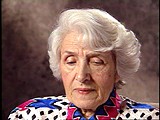
Like other Jews, the Lewents were confined to the Warsaw ghetto. In 1942, as Abraham hid in a crawl space, the Germans seized his mother and sisters in a raid. They perished. He was deployed for forced labor nearby, but escaped to return to his father in the ghetto. In 1943, the two were deported to Majdanek, where Abraham's father died. Abraham later was sent to Skarzysko, Buchenwald, Schlieben, Bisingen, and Dachau. US troops liberated Abraham as the Germans evacuated prisoners.
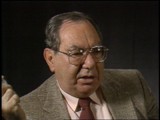
Leah grew up in Praga, a suburb of Warsaw, Poland. She was active in the Ha-Shomer ha-Tsa'ir Zionist youth movement. Germany invaded Poland in September 1939. Jews were forced to live in the Warsaw ghetto, which the Germans sealed off in November 1940. In the ghetto, Leah lived with a group of Ha-Shomer ha-Tsa'ir members. In September 1941, she and other members of the youth group escaped from the ghetto to a Ha-Shomer ha-Tsa'ir farm in Zarki, near Czestochowa, Poland. In May 1942, Leah became a courier…
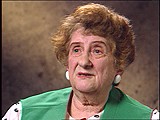
Vladka belonged to the Zukunft youth movement of the Bund (the Jewish Socialist party). She was active in the Warsaw ghetto underground as a member of the Jewish Fighting Organization (ZOB). In December 1942, she was smuggled out to the Aryan, Polish side of Warsaw to try to obtain arms and to find hiding places for children and adults. She became an active courier for the Jewish underground and for Jews in camps, forests, and other ghettos.
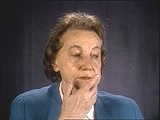
Roza's family moved to Warsaw in 1934. She had just begun college when Germany invaded Poland in 1939. In 1940, the Germans sealed the Warsaw ghetto, where her parents were shot during a roundup. Roza escaped and went into hiding. From her hiding place she saw the burning of the ghetto in the 1943 uprising. She had false papers stating she was a Polish Catholic (Maria Kowalczyk), and was deported by cattle train to Germany in June 1943. She worked on a farm until liberation in 1945.
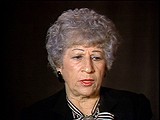
Vladka belonged to the Zukunft youth movement of the Bund (the Jewish Socialist party). She was active in the Warsaw ghetto underground as a member of the Jewish Fighting Organization (ZOB). In December 1942, she was smuggled out to the Aryan, Polish side of Warsaw to try to obtain arms and to find hiding places for children and adults. She became an active courier for the Jewish underground and for Jews in camps, forests, and other ghettos.
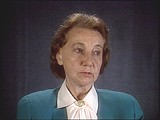
Shortly after the German invasion of Poland in September 1939, William's family was ordered into a ghetto and his brother went to a work camp. William bribed officials to discharge his brother from a hospital destined for evacuation to Auschwitz. Later, after escaping from a prison camp to tend to his brother, William was jailed. He was sent to Blechhammer, Gleiwitz (where he met his future wife), and other camps. William collapsed during a death march near the Austrian border, but was then liberated. His…

Leah grew up in Praga, a suburb of Warsaw, Poland. She was active in the Ha-Shomer ha-Tsa'ir Zionist youth movement. Germany invaded Poland in September 1939. Jews were forced to live in the Warsaw ghetto, which the Germans sealed off in November 1940. In the ghetto, Leah lived with a group of Ha-Shomer ha-Tsa'ir members. In September 1941, she and other members of the youth group escaped from the ghetto to a Ha-Shomer ha-Tsa'ir farm in Zarki, near Czestochowa, Poland. In May 1942, Leah became a courier…
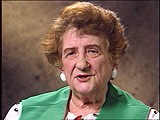
Both of Charlene's parents were local Jewish community leaders, and the family was active in community life. Charlene's father was a professor of philosophy at the State University of Lvov. World War II began with the German invasion of Poland on September 1, 1939. Charlene's town was in the part of eastern Poland occupied by the Soviet Union under the German-Soviet Pact of August 1939. Under the Soviet occupation, the family remained in its home and Charlene's father continued to teach. The Germans…
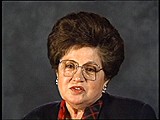
We would like to thank Crown Family Philanthropies, Abe and Ida Cooper Foundation, the Claims Conference, EVZ, and BMF for supporting the ongoing work to create content and resources for the Holocaust Encyclopedia. View the list of donor acknowledgement.